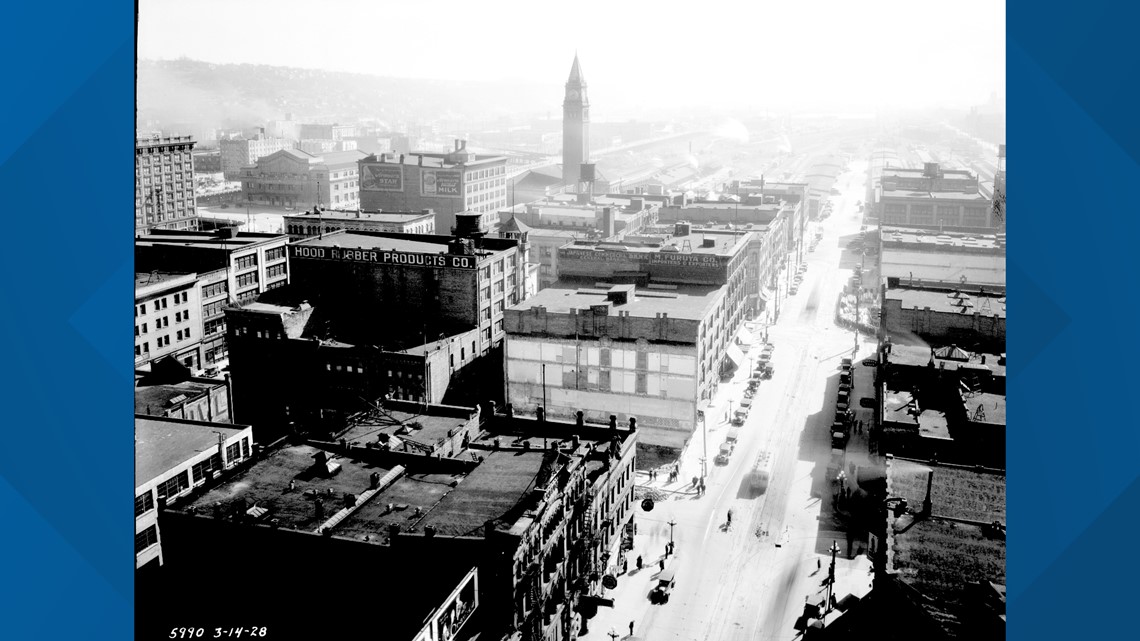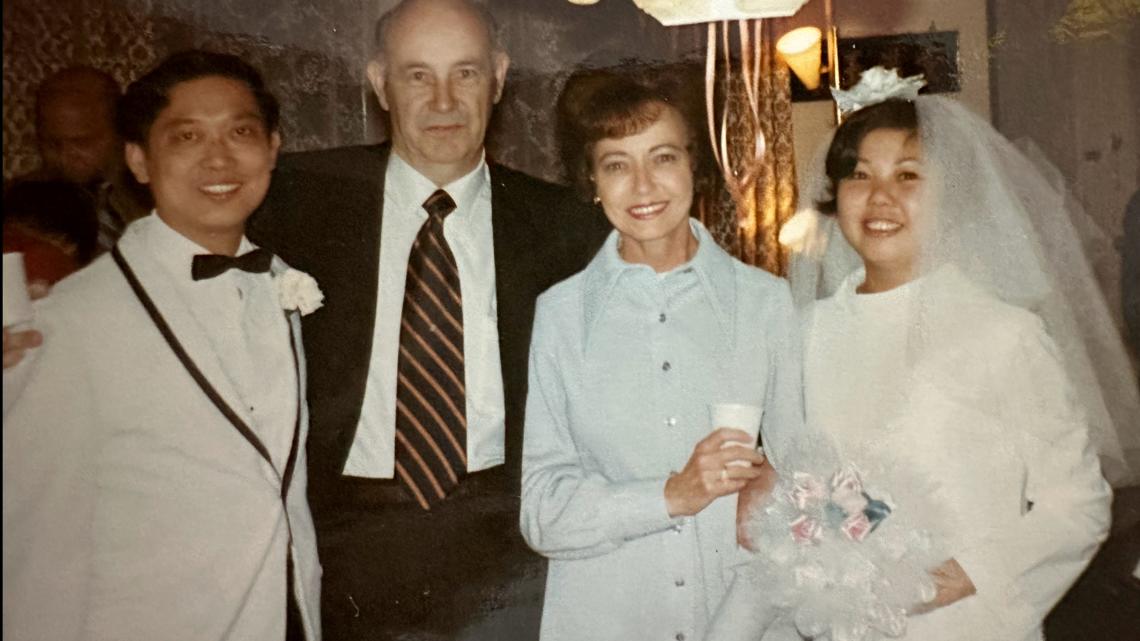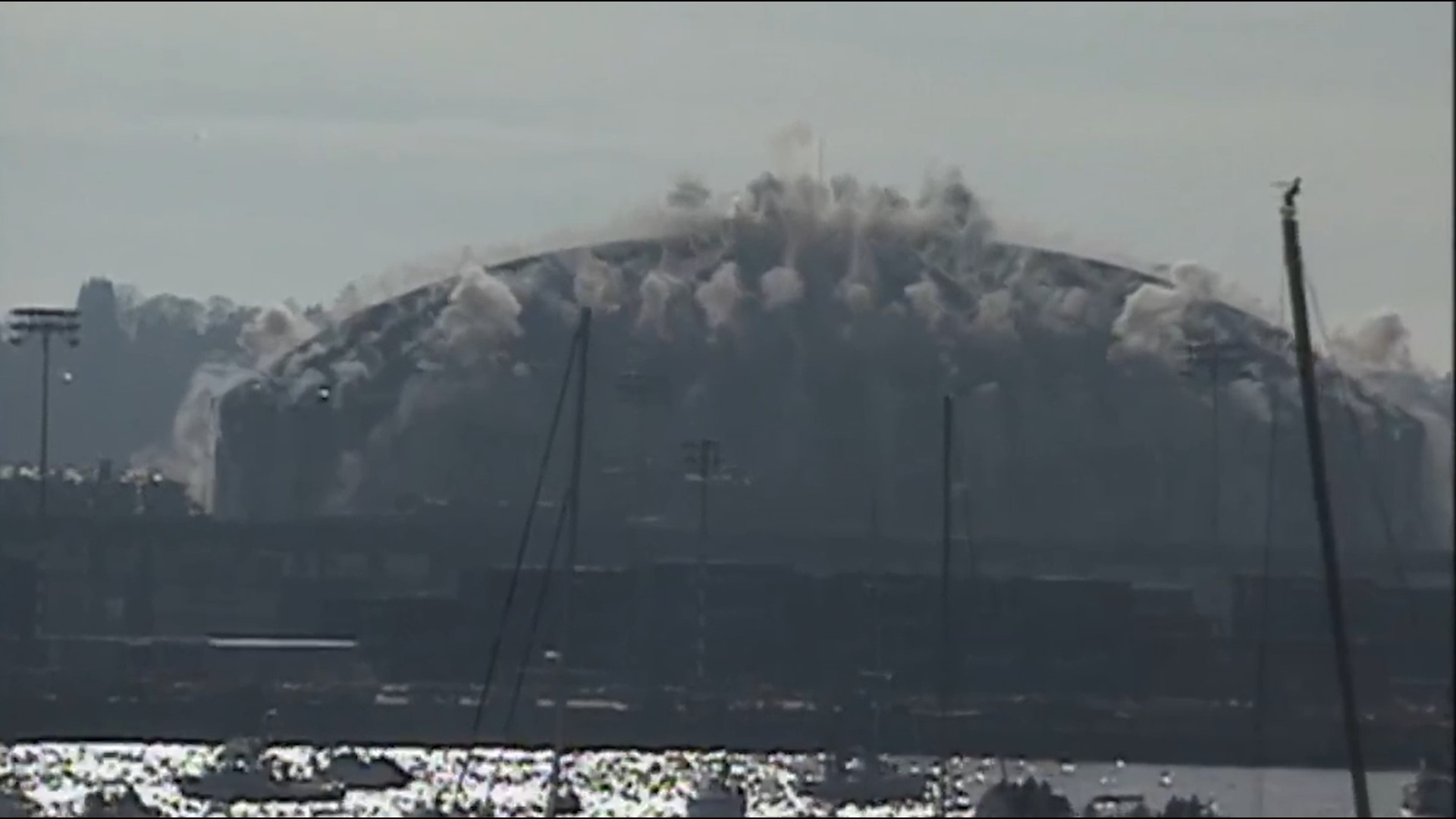SEATTLE — Residents of the historic Chinatown-International District are asking to be included in discussions for a new light rail project in, or near their neighborhood.
It's one of the latest projects in a decades-long struggle for those who call the area home to keep their culture, identity and location in Seattle alive.
In the fall of 2022, members of the neighborhood and advocates for Chinatown-International District, also known as the CID, protested against plans for a roughly 500-bed shelter the community did not want.
It was not the first time residents of the CID have fought to protect their neighborhood.
Longtime journalist Ron Chew said advocating for the neighborhood can be traced back to the 1970s during the construction of the Kingdome. He recalled the day it was imploded in 2000.
"It was a day where it's like wow," Chew said. "It's gone."
WATCH: The Kingdome's demolition in 2000
But Chew said CID residents were galvanized to act in the 1970s to stop its construction in the first place.
"I reported on the demonstrations against the construction of the Kingdome," Chew said. "The traffic impacts. The closure of the hotels, all of that stuff."
Read: The International Examiner argues in June 1978 against building the Kingdome in Seattle
Chew considers it among the first examples of Asian American activism inspired by the Civil Rights Movement. CID locals were sick and tired of what they perceived as racist land use policies and they were ready to fight for it.
"That was the beginning, I think, of people lifting their voices," Chew said.
Tessa Hulls, a visual artist and historian, currently has an exhibit at the Wing Luke Museum in the CID that explores the themes of racism and development that threaten to erase marginalized communities.
"I think that group of Pan Asian activism that was really rallying around the Kingdome, that was a group of community residents really saying, 'no, we live here. This is ours,'" Hulls said. "The pattern that I saw was that time and time again, you see people coming in and wanting to use the land in a way that's for the benefit of commerce, and it's not benefiting the people who are there and using it."
But the encroachment of the CID began more than a hundred years ago. Projects like the Jackson Regrade and the 2nd Avenue extension at Washington Street pushed out and displaced Seattle's early Chinatown in the early 1900s.
"That Second Avenue extension ultimately wiped out the remnants of that original Chinatown," Chew said.
Chew said the early Asian pioneers in Seattle moved southeast toward King Street, where the current CID exists today.
"So the new Chinatown began emerging here," Chew said.


Historians trace the 1960s as a time when yet another project impacted the neighborhood heavily.
Despite community concerns, the state blazed through the area with an I-5 overpass that sliced the neighborhood in half, closing businesses and changing the neighborhood's landscape, leaving residents at the time, feeling powerless.
"You're talking about low-income, elderly, many of whom don't speak English, immigrant families who work in sewing factories and restaurants, they're not gonna push back," Chew said. "They don't even know this is happening."
Chew wrote a memoir about his family's roots in Seattle's Chinatown dating back to 1911. He knows of the difficult realities families endured over time.
"I think there's a danger in how people view the Chinatown-International District in that you know, there's a feeling that this is sort of a tourist destination where you can pick up some souvenirs and pick up your favorite Chinese exotic food," Chew said. "It's not simply restaurants. It's a neighborhood with people living here who have lived here for a long, long time and call this their home."
People like Nora Chan.
Chan moved to the U.S. from Hong Kong 37 years ago and has lived in Seattle's CID for 20 years.
"I don't feel like they are strangers to me and they don't feel like strangers to me either," Chan said


A widow with four children and 13 grandchildren, Chan now spends her time helping neighbors and regularly delivers food to senior citizens who also call the CID home.
Lately, Chan has something to say to Sound Transit.
In recent months, she has spoken during public comment at Sound Transit board meetings to speak against the construction of a light rail expansion stop in the CID.
"Great transit is necessary for our Chinatown," Chan told the board.
Current light rail expansion plans include proposals that could barrel through the neighborhood and a decade of construction that comes with it.
This time, the neighborhood is ready. Some have expressed concern over a proposal to build on 5th Avenue. Some groups support a new stop along 4th Avenue, so long as it benefits the neighborhood.
Some in the CID know that a new Sound Transit station is inevitable. This time, they want to be included in the conversation.
Chan hopes her voice will teach younger people to continue advocating for the CID.
"You know one of these days I will be gone," Chan said. "So does that mean that mean that's the end of it? No! You know we want to go on. But how do we go on is we have to teach our younger generation."


